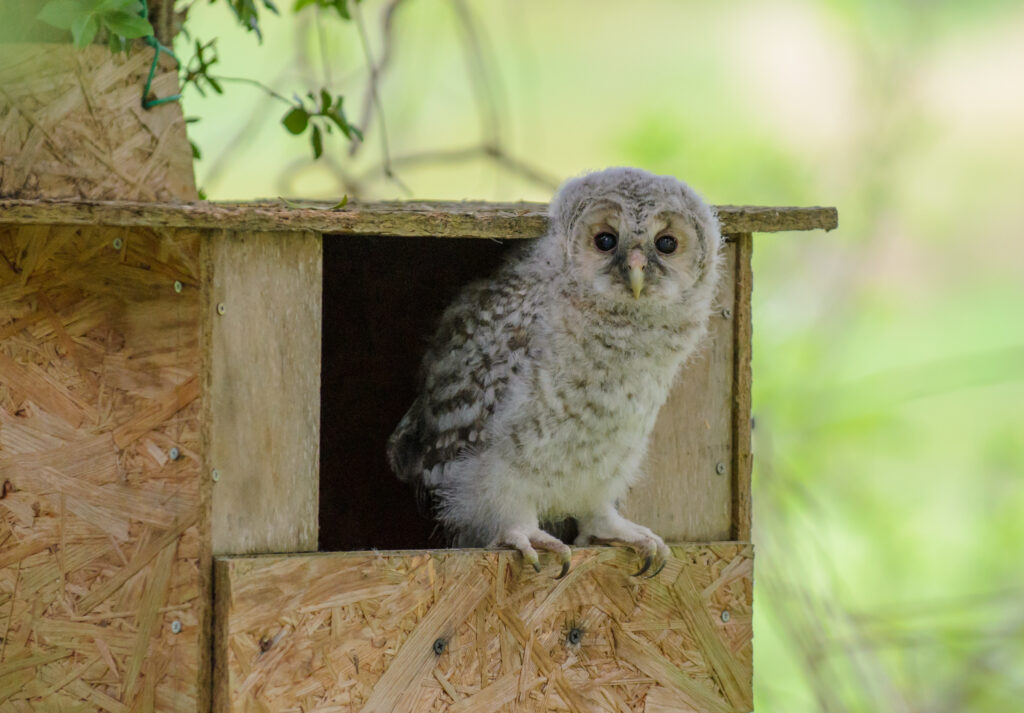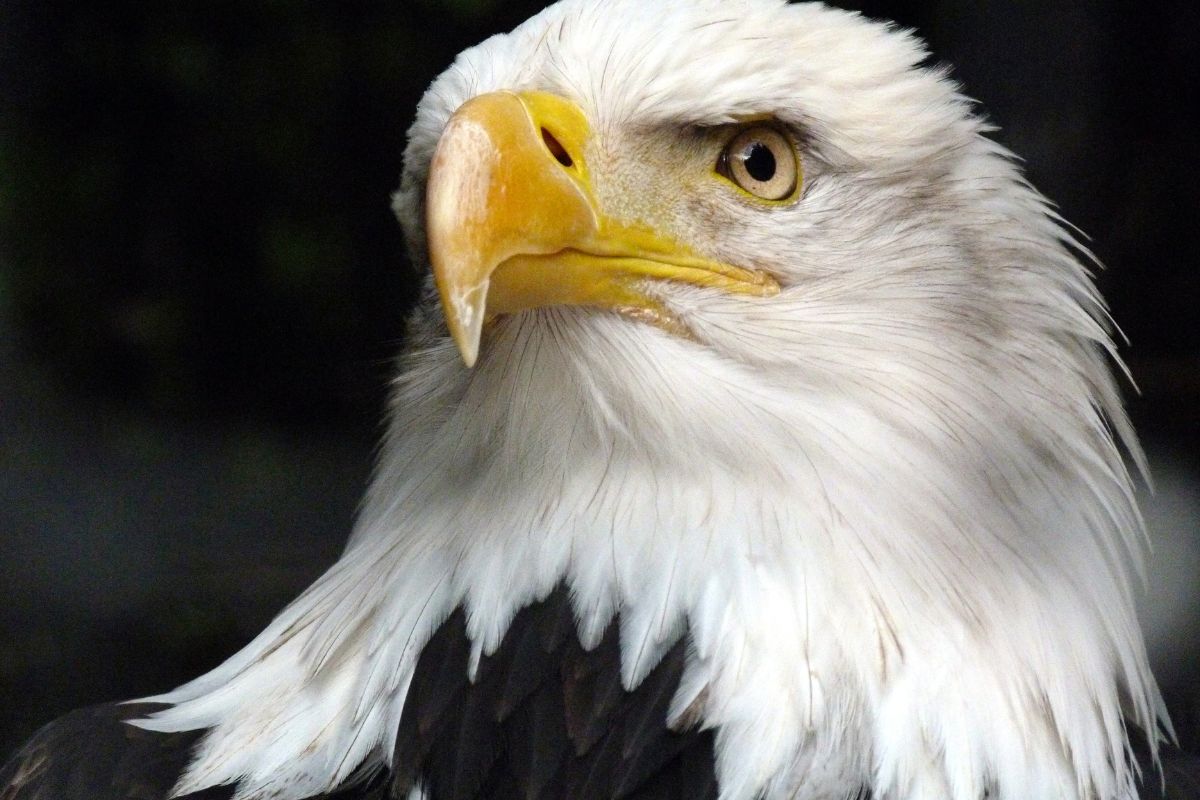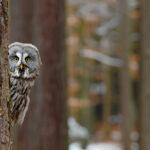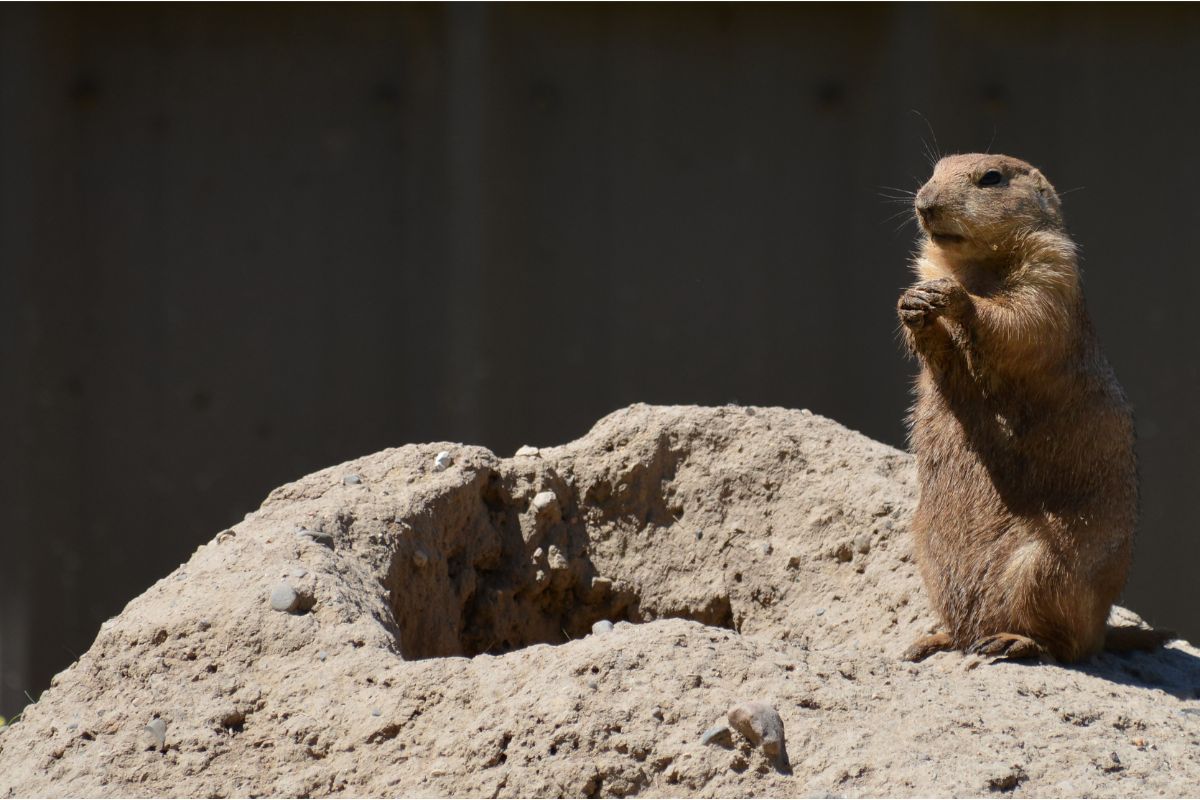
Owls can be found nearly every place in the world other than Antarctica. An owl’s home can be a variety of different things depending on the specific species of owl. This can include hollow logs, trees, ground burrows, barns, holes in cactuses, abandoned nests of other birds, and crevices in rock.
Let’s take a look at the most common species of owl and where they live.
Great Horned Owl
Great horned owls will typically live in trees. They will often take the opportunity to take over an abandoned nest of another bird or squirrel for having their young. They never build their own nest. A hollow tree can also be a suitable home for a great horned owl. They may also use an abandoned building or crevices in a rock or cliff.
Both the male and female will roost near their nesting site for months leading up to laying their eggs. It’s most common for great horned owls to have 2 eggs, although they can lay between 1 and 4. Both the male and female will help provide food to their young during the first few months.
Barn Owl

Despite its name, the barn owl will nest and live in places other than barns. Barns and other abandoned structures make up a large percentage of where they nest, which is how they got their name. They will make nests on ledges and corners inside of these buildings. Other locations that they will build their nest include hollow trees, rock crevices, church steeples, and even ledges underneath bridges.
Barn owls can lay between 2 and 12 eggs. The female will typically stay with the young in the nest while the male hunts and brings back food. They will feed on rodents mostly, which is why many farmers like to see them in their barns and around the farm.
Snowy Owl
Snowy owls live in arctic regions. They can withstand much colder temperatures than other species of owl. They can be found in northern Canada year-round and during the winter season they can be seen in areas of the northern United States, especially in northeastern states.
Because they live in arctic tundra, it is typically treeless areas. This means the snowy owl will nest right on the ground. They will typically choose a high point on a rocky area or mound to build their nest. This makes it easier to see any predators coming. Snowy owls will lay between 4 and 8 eggs and the female will stay at the nest while the male provides food and guards the female and nest.
Barred Owl
Barred owls are most common to the eastern United States. They can be found in parts of Canada and some areas in the upper northwestern United States as well. Barred owls are attracted to heavily wooded areas and will typically nest high up in trees. They will find a hollow hole or take over an abandoned nest similar to other owl species. Barred owls will lay between 1 and 5 eggs and will take care of their young for up to four months.
Eastern Screech Owl
The eastern screech owl is primarily found east of the Rocky Mountains in the United States. They will typically choose a hollow hole in a tree to nest in. Many times, it is a hole made by woodpeckers. Since the screech owl is a small species, it can fit and nest in much smaller tree cavities than the larger species of owl. The eastern screech owl will typically lay between 2 and 6 eggs.
Nesting Boxes

Nesting boxes
One place that many of these owl species will nest in, that hasn’t been mentioned, is an owl nesting box. These are boxes that are typically built out of wood or plastic that are made for the specific purpose of providing a safe place for owls to nest. Think of it like a birdhouse, but for owls. There are many different sizes that are sold to accommodate the different species of owl. You can even build your own. There are a number of videos and free plans online that you can use to make a great owl nesting box.
This is a great option to attract owls to your backyard. It’s best to research which owl species you have in your area or which ones you are wanting to attract to your backyard first. This way you know which size of nesting box to buy or build. You will also need to know which species is likely to use it, as it will help determine where to place the nesting box. Some species of owl prefer to be rather high up when they nest, so you may have to get creative with your placement of the nesting box.
- Why are skunks called polecats? - November 16, 2022
- Do Armadillos lay eggs? - November 16, 2022
- Can animals have down syndrome? - October 5, 2022








